Strep throat symptoms in teens. Strep Throat in Teens: Symptoms, Causes, and Prevention
What are the common symptoms of strep throat in teenagers. How is strep throat diagnosed and treated. What complications can arise from untreated strep throat. How can teens prevent getting strep throat.
Understanding Strep Throat: A Common Bacterial Infection
Strep throat is a bacterial infection caused by Streptococcus pyogenes, also known as group A streptococcus. While it can affect people of all ages, it’s particularly common among children and teenagers. This infection can cause significant discomfort and, if left untreated, may lead to serious complications.
How does strep throat differ from other sore throats? Unlike viral sore throats, strep throat is caused by bacteria and requires antibiotic treatment. It accounts for a relatively small percentage of all sore throats, but its potential complications make it important to identify and treat promptly.
Recognizing Strep Throat Symptoms in Teens
Teenagers with strep throat often experience a range of symptoms that can vary in severity. These symptoms typically appear suddenly and may include:

- Severe throat pain that comes on quickly
- Difficulty swallowing
- Swollen, red tonsils, sometimes with white patches or streaks of pus
- Tiny red spots on the soft or hard palate
- Swollen and tender lymph nodes in the neck
- Fever
- Headache
- Body aches
- Nausea or vomiting
- Rash (in some cases)
Can teens have strep throat without showing all these symptoms? Yes, it’s possible for a teenager to have strep throat without exhibiting all of these symptoms. Conversely, having these symptoms doesn’t necessarily mean a teen has strep throat, as other illnesses can cause similar signs. This is why proper medical diagnosis is crucial.
Diagnosing Strep Throat: The Importance of Prompt Testing
Given that strep throat symptoms can mimic those of other illnesses, how is it accurately diagnosed? Diagnosis typically involves a combination of physical examination and laboratory tests. The most common diagnostic tools include:
- Rapid antigen test: This quick test can detect strep bacteria in minutes from a throat swab.
- Throat culture: If the rapid test is negative but strep is still suspected, a throat culture may be performed. This test takes longer but is more accurate.
Why is prompt diagnosis important? Early detection and treatment of strep throat can help prevent complications and reduce the risk of spreading the infection to others.

Treatment Options for Strep Throat in Teenagers
Once diagnosed, how is strep throat treated in teens? The primary treatment for strep throat is antibiotics, typically penicillin or amoxicillin. For those allergic to penicillin, alternative antibiotics are available. The full course of antibiotics should always be completed, even if symptoms improve, to ensure the infection is fully eradicated.
In addition to antibiotics, what can be done to alleviate symptoms? Some helpful measures include:
- Getting plenty of rest
- Drinking warm liquids to soothe the throat
- Using over-the-counter pain relievers like ibuprofen or acetaminophen
- Gargling with warm salt water
- Sucking on throat lozenges (for older teens)
Potential Complications of Untreated Strep Throat
Why is it crucial to treat strep throat promptly? If left untreated, strep throat can lead to several serious complications, including:
- Rheumatic fever: An inflammatory condition that can affect the heart, joints, skin, and brain
- Poststreptococcal glomerulonephritis: Inflammation of the kidneys
- Scarlet fever: A streptococcal infection characterized by a distinctive rash
- Spread of infection to other areas such as the tonsils, sinuses, skin, blood, or middle ear
Is there a link between strep throat and other conditions? Some research suggests a possible connection between strep infections and a condition called PANDAS (Pediatric Autoimmune Neuropsychiatric Disorders Associated with Streptococcal Infections). This condition involves worsening of neuropsychiatric symptoms, such as those associated with OCD or tic disorders, following a strep infection. However, this relationship remains controversial and requires further study.

Preventing Strep Throat: Strategies for Teens
How can teenagers reduce their risk of getting strep throat? While it’s not always possible to prevent strep throat, several strategies can help minimize the risk:
- Practice good hand hygiene: Wash hands regularly with soap and water for at least 20 seconds, or use an alcohol-based hand sanitizer when soap and water aren’t available.
- Avoid sharing personal items: Don’t share drinking glasses, eating utensils, or other personal items.
- Practice proper respiratory hygiene: Cover the mouth and nose when coughing or sneezing, preferably with the elbow or a tissue.
- Maintain a healthy lifestyle: A balanced diet, regular exercise, and adequate sleep can help support the immune system.
Should teens stay home if they have strep throat? Yes, teens diagnosed with strep throat should stay home from school or other activities until they’ve been on antibiotics for at least 24 hours and no longer have a fever. This helps prevent the spread of the infection to others.

When to Seek Medical Attention
At what point should a teenager see a doctor for a sore throat? It’s advisable to consult a healthcare provider if a teen experiences:
- A sore throat lasting longer than 48 hours
- A sore throat accompanied by swollen, tender lymph nodes
- Difficulty breathing or swallowing
- A fever over 101°F (38.3°C)
- A sore throat with a rash
- No improvement after 48 hours of antibiotic treatment (if strep has been diagnosed)
Why is it important not to ignore these symptoms? Prompt medical attention can lead to earlier diagnosis and treatment, reducing the risk of complications and speeding up recovery.
Living with Strep Throat: Tips for Teens and Parents
How can teens manage their daily activities while recovering from strep throat? Here are some tips:
- Rest as much as possible, especially in the first few days of illness
- Stay hydrated by drinking plenty of fluids
- Eat soft, soothing foods that are easy to swallow
- Use a humidifier to add moisture to the air and soothe the throat
- Avoid irritants like cigarette smoke
What role can parents play in helping their teen recover from strep throat? Parents can support their teen’s recovery by:

- Ensuring the teen takes all prescribed antibiotics as directed
- Providing comfort measures like warm compresses for neck pain
- Monitoring symptoms and seeking additional medical care if needed
- Helping the teen catch up on missed schoolwork once they’re feeling better
By understanding the symptoms, treatment, and prevention of strep throat, teenagers and their parents can better manage this common but potentially serious infection. Remember, while strep throat can be uncomfortable, with proper care and treatment, most teens recover fully within a week or two.
Strep throat – Symptoms & causes
Overview
Strep throat is a bacterial infection that can make your throat feel sore and scratchy. Strep throat accounts for only a small portion of sore throats.
If untreated, strep throat can cause complications, such as kidney inflammation or rheumatic fever. Rheumatic fever can lead to painful and inflamed joints, a specific type of rash, or heart valve damage.
Strep throat is most common in children, but it affects people of all ages. If you or your child has signs or symptoms of strep throat, see your doctor for prompt testing and treatment.
Products & Services
Symptoms
Signs and symptoms of strep throat can include:
- Throat pain that usually comes on quickly
- Painful swallowing
- Red and swollen tonsils, sometimes with white patches or streaks of pus
- Tiny red spots on the area at the back of the roof of the mouth (soft or hard palate)
- Swollen, tender lymph nodes in your neck
- Fever
- Headache
- Rash
- Nausea or vomiting, especially in younger children
- Body aches
Strep throat infection
Strep throat usually causes throat pain and difficulty swallowing. This photo of strep throat shows inflammation and red spots, caused by the infection.
This photo of strep throat shows inflammation and red spots, caused by the infection.
It’s possible for you or your child to have many of these signs and symptoms but not have strep throat. The cause of these signs and symptoms could be a viral infection or some other illness. That’s why your doctor generally tests specifically for strep throat.
It’s also possible for you to be exposed to a person who carries strep but shows no symptoms.
When to see a doctor
Call your doctor if you or your child has any of these signs and symptoms:
- A sore throat accompanied by tender, swollen lymph glands
- A sore throat that lasts longer than 48 hours
- A fever
- A sore throat accompanied by a rash
- Problems breathing or swallowing
- If strep has been diagnosed, a lack of improvement after taking antibiotics for 48 hours
Causes
Strep throat is caused by infection with a bacterium known as Streptococcus pyogenes, also called group A streptococcus.
Streptococcal bacteria are contagious. They can spread through droplets when someone with the infection coughs or sneezes, or through shared food or drinks. You can also pick up the bacteria from a doorknob or other surface and transfer them to your nose, mouth or eyes.
Risk factors
Several factors can increase your risk of strep throat infection:
- Young age. Strep throat occurs most commonly in children.
- Time of year. Although strep throat can occur anytime, it tends to circulate in winter and early spring. Strep bacteria flourish wherever groups of people are in close contact.
Complications
Strep throat can lead to serious complications. Antibiotic treatment reduces the risk.
Spread of infection
Strep bacteria may spread, causing infection in:
- Tonsils
- Sinuses
- Skin
- Blood
- Middle ear
Inflammatory reactions
Strep infection may lead to inflammatory illnesses, including:
- Scarlet fever, a streptococcal infection characterized by a prominent rash
- Inflammation of the kidney (poststreptococcal glomerulonephritis)
- Rheumatic fever, a serious inflammatory condition that can affect the heart, joints, nervous system and skin
- Poststreptococcal reactive arthritis, a condition that causes inflammation of the joints
A possible relationship has been suggested between strep infection and a rare condition called pediatric autoimmune neuropsychiatric disorder associated with group A streptococci (PANDAS).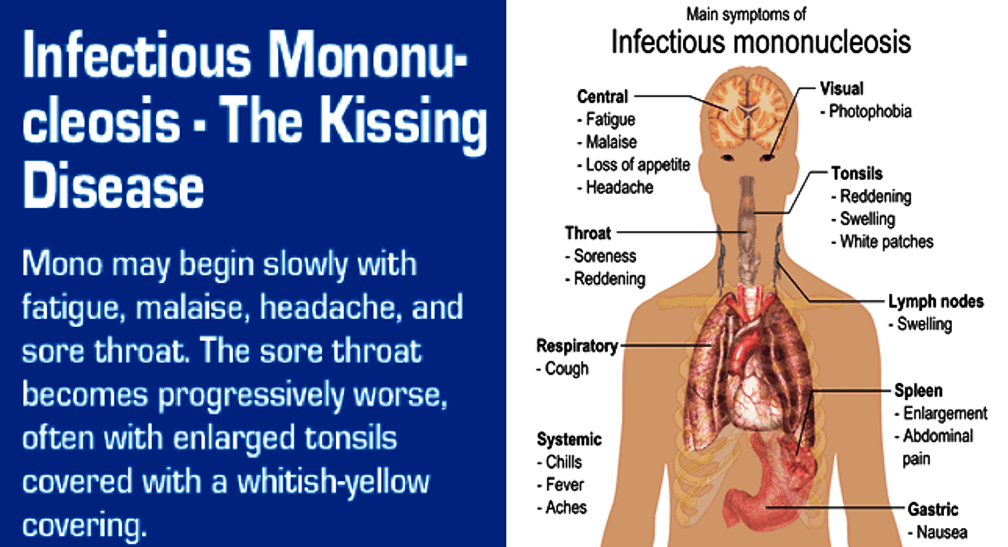 Children with this condition experience worsened symptoms of neuropsychiatric conditions, such as obsessive-compulsive disorder or tic disorders, with strep. This relationship currently remains unproved and controversial.
Children with this condition experience worsened symptoms of neuropsychiatric conditions, such as obsessive-compulsive disorder or tic disorders, with strep. This relationship currently remains unproved and controversial.
Prevention
To prevent strep infection:
- Wash your hands. Proper hand-washing is the best way to prevent all kinds of infections. That’s why it’s important to wash your own hands regularly with soap and water for at least 20 seconds. Teach your children how to wash their hands properly using soap and water or to use an alcohol-based hand sanitizer if there is no soap and water available.
- Cover your mouth. Teach your children to cover their mouths with an elbow or tissue when they cough or sneeze.
- Don’t share personal items. Don’t share drinking glasses or eating utensils. Wash dishes in hot, soapy water or in a dishwasher.
Strep throat – Symptoms & causes
Overview
Strep throat is a bacterial infection that can make your throat feel sore and scratchy.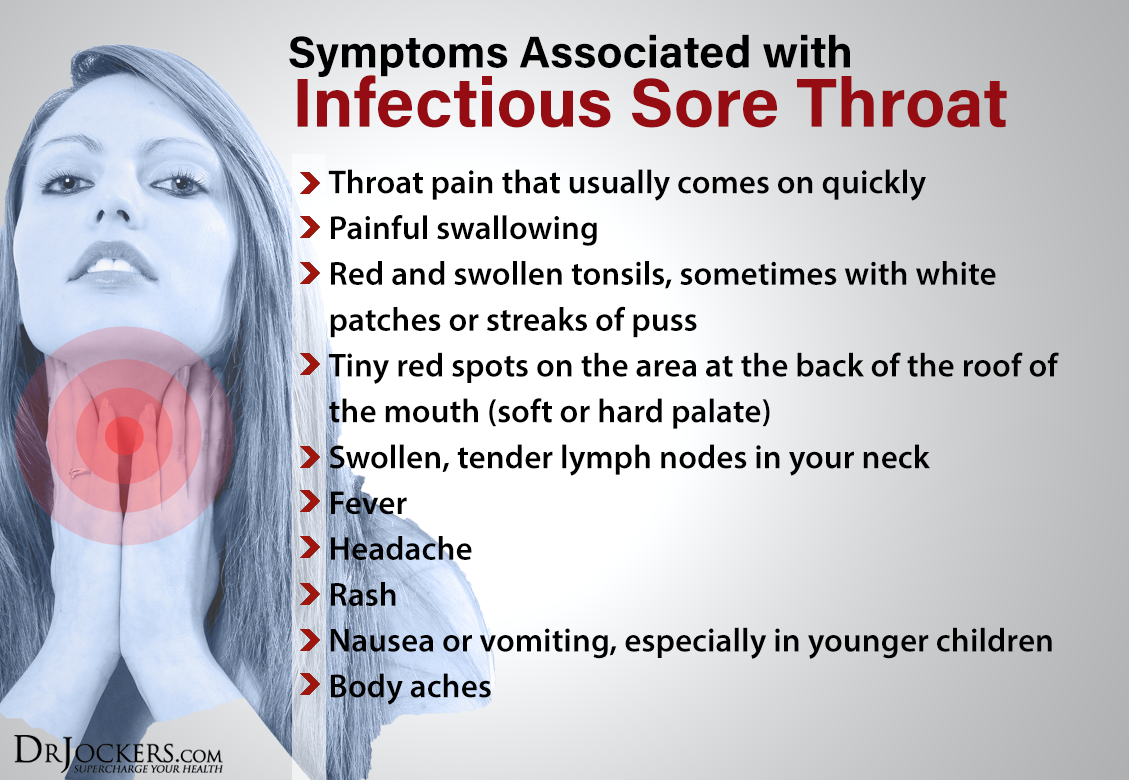 Strep throat accounts for only a small portion of sore throats.
Strep throat accounts for only a small portion of sore throats.
If untreated, strep throat can cause complications, such as kidney inflammation or rheumatic fever. Rheumatic fever can lead to painful and inflamed joints, a specific type of rash, or heart valve damage.
Strep throat is most common in children, but it affects people of all ages. If you or your child has signs or symptoms of strep throat, see your doctor for prompt testing and treatment.
Products & Services
Symptoms
Signs and symptoms of strep throat can include:
- Throat pain that usually comes on quickly
- Painful swallowing
- Red and swollen tonsils, sometimes with white patches or streaks of pus
- Tiny red spots on the area at the back of the roof of the mouth (soft or hard palate)
- Swollen, tender lymph nodes in your neck
- Fever
- Headache
- Rash
- Nausea or vomiting, especially in younger children
- Body aches
Strep throat infection
Strep throat usually causes throat pain and difficulty swallowing. This photo of strep throat shows inflammation and red spots, caused by the infection.
This photo of strep throat shows inflammation and red spots, caused by the infection.
It’s possible for you or your child to have many of these signs and symptoms but not have strep throat. The cause of these signs and symptoms could be a viral infection or some other illness. That’s why your doctor generally tests specifically for strep throat.
It’s also possible for you to be exposed to a person who carries strep but shows no symptoms.
When to see a doctor
Call your doctor if you or your child has any of these signs and symptoms:
- A sore throat accompanied by tender, swollen lymph glands
- A sore throat that lasts longer than 48 hours
- A fever
- A sore throat accompanied by a rash
- Problems breathing or swallowing
- If strep has been diagnosed, a lack of improvement after taking antibiotics for 48 hours
Causes
Strep throat is caused by infection with a bacterium known as Streptococcus pyogenes, also called group A streptococcus.
Streptococcal bacteria are contagious. They can spread through droplets when someone with the infection coughs or sneezes, or through shared food or drinks. You can also pick up the bacteria from a doorknob or other surface and transfer them to your nose, mouth or eyes.
Risk factors
Several factors can increase your risk of strep throat infection:
- Young age. Strep throat occurs most commonly in children.
- Time of year. Although strep throat can occur anytime, it tends to circulate in winter and early spring. Strep bacteria flourish wherever groups of people are in close contact.
Complications
Strep throat can lead to serious complications. Antibiotic treatment reduces the risk.
Spread of infection
Strep bacteria may spread, causing infection in:
- Tonsils
- Sinuses
- Skin
- Blood
- Middle ear
Inflammatory reactions
Strep infection may lead to inflammatory illnesses, including:
- Scarlet fever, a streptococcal infection characterized by a prominent rash
- Inflammation of the kidney (poststreptococcal glomerulonephritis)
- Rheumatic fever, a serious inflammatory condition that can affect the heart, joints, nervous system and skin
- Poststreptococcal reactive arthritis, a condition that causes inflammation of the joints
A possible relationship has been suggested between strep infection and a rare condition called pediatric autoimmune neuropsychiatric disorder associated with group A streptococci (PANDAS). Children with this condition experience worsened symptoms of neuropsychiatric conditions, such as obsessive-compulsive disorder or tic disorders, with strep. This relationship currently remains unproved and controversial.
Children with this condition experience worsened symptoms of neuropsychiatric conditions, such as obsessive-compulsive disorder or tic disorders, with strep. This relationship currently remains unproved and controversial.
Prevention
To prevent strep infection:
- Wash your hands. Proper hand-washing is the best way to prevent all kinds of infections. That’s why it’s important to wash your own hands regularly with soap and water for at least 20 seconds. Teach your children how to wash their hands properly using soap and water or to use an alcohol-based hand sanitizer if there is no soap and water available.
- Cover your mouth. Teach your children to cover their mouths with an elbow or tissue when they cough or sneeze.
- Don’t share personal items. Don’t share drinking glasses or eating utensils. Wash dishes in hot, soapy water or in a dishwasher.
Angina in a child – types, symptoms, treatment and prevention
Angina in a child: general information
In the people, it is customary to call angina any acute pain in the throat. But there is no such concept in the International Classification of Diseases (ICD). An infection that causes acute pain in the throat is called “acute tonsillitis” in the ICD.
But there is no such concept in the International Classification of Diseases (ICD). An infection that causes acute pain in the throat is called “acute tonsillitis” in the ICD.
In the Eleventh Revision of the International Statistical Classification of Diseases and Related Health Problems (ICD-11), acute tonsillitis (tonsillitis) is coded as CA03.
Tonsillitis – inflammation of the tonsils (from Latin tonsillae – “tonsils”), which occurs in response to a viral, bacterial or fungal infection.
An important part of the immune system is located in the nasopharynx – Pirogov-Waldeyer’s lymphopharyngeal ring. It consists of 6 small glands (tonsils) in which immune cells live.
Tonsils in the nasopharynx serve as protection against the penetration of harmful microbes into the body
The lymphopharyngeal ring, as it were, wraps around the throat from the inside and does not let dangerous microbes further into the body.
It works most actively in children from 2 to 15 years old, because of this, they are more often diagnosed with tonsillitis. By adulthood, part of the tonsils “turns off”, and the body develops new, more advanced ways to fight infections without using the tonsils. Bone marrow and lymph nodes in other parts of the body help adults fight germs.
By adulthood, part of the tonsils “turns off”, and the body develops new, more advanced ways to fight infections without using the tonsils. Bone marrow and lymph nodes in other parts of the body help adults fight germs.
Most often, the inflammatory process in angina develops in the palatine tonsils – tonsils. The name comes from the Latin glandula – “small acorn”.
Along with the palatine tonsils, inflammation can develop in the pharyngeal and lingual tonsils.
Varieties of angina in children
Angina, or tonsillitis, in children is classified according to several parameters.
Duration:
- acute tonsillitis. The inflammation lasts from 3 days to 2 weeks and is accompanied by a sharp increase in body temperature and sore throat;
- recurrent tonsillitis. Inflammation occurs more than 5 times a year, including immediately after recovery;
- chronic tonsillitis. The inflammation lasts longer than 2 weeks.
 In this case, the symptoms may be less pronounced than in the acute form of the disease.
In this case, the symptoms may be less pronounced than in the acute form of the disease.
By location of inflammation:
- catarrhal tonsillitis – inflammation develops in the mucous membrane of the nasopharynx;
- lacunar tonsillitis – in lacunae (depressions) of the tonsils;
- follicular tonsillitis – in the follicles (clusters of lymphoid tissue) of the tonsils.
By the presence of complications:
- uncomplicated tonsillitis is the most common form of the disease, which resolves in an average of 2 weeks;
- complicated tonsillitis – a purulent process can join the inflammation, the tonsils grow and can block the airways.
Pathogens of sore throat in a child
Most cases of acute tonsillitis are caused by viruses. In children under 5 years old, it is most often adenovirus, Coxsackie, measles, scarlet fever viruses, in children over 5 years old and adolescents – respiratory syncytial virus, influenza viruses.
Common viruses that cause sore throats in children:
- adenovirus,
- Coxsackie virus,
- measles virus,
- scarlet fever virus,
- respiratory syncytial virus,
- influenza viruses,
- cytomegalovirus (CMV),
- Epstein-Barr virus (EBV).
As a rule, viral sore throats are relatively safe, because the immune system copes with their pathogens on its own.
Another cause of acute tonsillitis in children is bacteria: group A streptococci, less often staphylococci. Bacterial tonsillitis does not go away on its own and requires mandatory antibacterial treatment.
Common bacteria that cause sore throats in children:
- streptococci,
- Staphylococcus aureus,
- whooping cough.
As a rule, in children from 5 to 15 years, acute tonsillitis is of bacterial origin. In young children – viral.
The main difference between viral and bacterial tonsillitis is the absence of purulent plaque on the tonsils
Ways of transmission of angina in children
Angina itself is not contagious – the danger is the viral and bacterial infections that cause it.
Viruses and bacteria that can lead to acute tonsillitis are found in tiny droplets of saliva or nasal mucus that are spread from an infected person when they cough, sneeze, or talk.
Most often, outbreaks of viral and bacterial tonsillitis are detected in kindergartens, schools, sections
You can get infected less often if you touch surfaces on which virus particles have remained (for example, door handles, remote controls), and then touch your face or eyes with unwashed hands.
Moreover, both bacterial and viral tonsillitis can be contagious 2–3 days before the first symptoms appear.
Development of angina in children
Sore throat causative agents penetrate the mucous membrane of the nose or mouth with inhaled air, less often by household contact.
If the immune system fails to fight the infection, then viruses and bacteria can remain on the tonsils and lead to acute inflammation – tonsillitis.
On average, the incubation period for viral and bacterial infections lasts from 10 to 20 days, during which time the child does not feel any symptoms.
With a decrease in immune defense, infectious agents can spread further: with the blood flow, they are transferred to internal organs, bones, joints and provoke complications.
Symptoms of sore throat in children
Symptoms of angina in children are usually pronounced.
Symptoms of acute tonsillitis in a child:
- sore throat,
- red and swollen tonsils,
- pain when swallowing,
- white or yellowish coating on tonsils,
- painful and enlarged lymph nodes in the neck,
- high temperature,
- headache.
With tonsillitis, purulent plugs may appear on the tonsils, which can be seen if the child opens his mouth wide
It is difficult for young children to describe how they feel, but there are signs by which parents may suspect acute tonsillitis in a child.
Signs of acute tonsillitis in children:
- increased salivation,
- refusal to eat,
- tearfulness.

If the disease becomes chronic, then the symptoms subside temporarily.
Symptoms of chronic tonsillitis in a child:
- Enlarged tonsils and lymph nodes in the neck,
- purulent plugs in the tonsils,
- bad breath.
Complications of tonsillitis in children
In most cases, viral tonsillitis in children resolves on its own. The prognosis is favorable. But a severe bacterial infection or frequent sore throats can lead to complications.
Complications of acute tonsillitis in children:
- inflammation of the middle ear – otitis media;
- inflammation of the mucous membrane of the nasal cavity and paranasal sinuses – rhinosinusitis;
- Apnea is a condition in which a person stops breathing for a short time during sleep. With angina, it is associated with chronic inflammation of the tonsils;
- paratonsillar abscess is an acute inflammatory process that forms in the tissues surrounding the palatine tonsils and leads to the formation of a purulent cavity.

Diagnosis of angina in children
If the general condition of the child worsens – the temperature rises, he refuses to eat and drink, complains of a sore throat – you should call the pediatrician on duty or the ambulance team as soon as possible.
Call an ambulance immediately if your child has:
- temperature above 39°C,
- difficulty swallowing,
- breathing problems,
- confusion,
- vomiting.
Usually a pediatrician or general practitioner can easily diagnose acute tonsillitis on examination. Laboratory tests may be required to confirm the diagnosis.
Inspection
Examination for acute tonsillitis begins with an assessment of the functions of breathing and swallowing. The doctor examines the mucous membrane of the oral cavity, teeth, feels the lymph nodes on the neck.
The next step is the examination of the pharynx. With angina, the child’s throat is red, a whitish purulent coating is visible on the tonsils, and the cervical lymph nodes are enlarged and hurt when pressed.
To assess the condition of the mucous membrane of the throat, the doctor performs a pharyngoscopy – an examination of the pharyngeal cavity using an instrument similar to a magnifying glass with a flashlight
Laboratory diagnostics
To clarify the diagnosis, if acute tonsillitis is suspected, the child is prescribed laboratory blood tests.
Clinical blood test allows you to assess the general state of health and the severity of the inflammatory process.
Clinical blood test with leukocyte formula and ESR (with microscopy of a blood smear in case of pathological changes) (venous blood)
Ven. blood (+140 ₽) 43 1 day
43 bonuses
430 ₽
Add to cart
1 day
Ven. blood 140 ₽
In addition, the severity of inflammation is also indicated by early markers of the inflammatory process: C-reactive protein and procalcitonin.
C-reactive protein
Ven. blood (+140 ₽) 33 1 day
33 bonuses
330 ₽
Add to cart
1 day
Ven. blood 140 ₽
blood 140 ₽
Procalcitonin
Ven. blood (+140 ₽) 174 1 day
174 bonuses
1,740 ₽
Add to cart
1 day
Ven. blood 140 ₽
For retrospective diagnosis of acute streptococcal angina, if infection is suspected to be chronic, and to assess the risk of complications, the doctor may prescribe blood tests for antistreptolysin-O and rheumatoid factor.
Antistreptolysin-O (ASLO)
Ven. blood (+140 ₽) 35 1 day
35 bonuses
350 ₽
Add to cart
1 day
Ven. blood 140 ₽
Rheumatoid factor
Ven. blood (+140 ₽) 35 1 day
35 bonuses
350 ₽
Add to cart
1 day
Ven. blood 140 ₽
If a bacterial nature of the disease is suspected, a swab from the pharynx is sown for microflora and the sensitivity of the pathogen to antibacterial drugs and bacteriophages is determined.
Sowing from the throat for microflora with determining the sensitivity of the pathogen to antibacterial drugs and bacteriophages
Scraping (+250 ₽) 135 5 days
135 bonuses
1 350 ₽
5 days
Scraping 250 ₽
Throat culture for pyogenic streptococcus (Streptococcus pyogenes) with determination of pathogen sensitivity to antibacterial drugs and bacteriophages
Scraping (+250 ₽) 136 3 days
136 bonuses
1 360 ₽
Add to cart
Scraping 250 ₽
Treatment of angina in children
Children with acute tonsillitis are treated by a pediatrician or an otorhinolaryngologist.
Medical treatment
The choice of tactics for treating tonsillitis in a child will depend on the cause of the disease.
virus infection usually clears up on its own in 7 to 10 days.
To relieve the symptoms of a viral sore throat, your doctor may recommend:
- observe bed rest;
- drink plenty of fluids to soothe your throat;
- suck on local anesthetic lozenges or lozenges to relieve a sore throat;
- drink cool drinks, lick popsicles, eat ice cream.
Ice cream and cold drinks will not cure a sore throat, but may relieve the pain. Cold causes local vasoconstriction. As a result, swelling and pain are reduced.
Bacterial infection is treated with a course of antibiotics. It is important to complete the full course of antibiotic therapy prescribed by your doctor to avoid the development of antibiotic resistance (microorganism resistance to the drug). In addition, if treatment is completed earlier, the bacterium can spread throughout the body and lead to complications and chronic infection, which will be more difficult to stop (strong antibiotics in high doses may be required). As a rule, the course of treatment is 10-14 days.
In addition, if treatment is completed earlier, the bacterium can spread throughout the body and lead to complications and chronic infection, which will be more difficult to stop (strong antibiotics in high doses may be required). As a rule, the course of treatment is 10-14 days.
Surgical treatment
If medical treatment does not help and the child becomes worse or has frequent sore throats (more than 5 times a year), the doctor may recommend surgery to remove the tonsils – tonsillectomy.
Scientists and doctors have studied the health of more than 1 million people who had their tonsils, adenoids, or both removed in childhood. In adulthood, such people had a 3-fold increase in the risk of diseases of the upper respiratory tract. But, if the operation is nevertheless prescribed by a doctor, this means that the benefits of tonsillectomy outweigh the potential risk of developing infections in the future.
Tonsils cannot be removed just like that, strict indications are needed for the operation.
Without tonsils, the child’s immune system is deprived of an important protective link.
Tonsillectomy is performed under general anesthesia, the operation lasts an average of 35-40 minutes. The rehabilitation period is not required. As a rule, the child is sent home within a few hours after the operation.
After 7-10 days, the mucous membrane of the pharynx is completely restored.
Prognosis of angina in children
Angina in children, as a rule, is more severe than in adults: with high fever, severe sore throat, bright purulent plaque on the tonsils.
The average duration of treatment for uncomplicated bacterial tonsillitis in a child is no more than 2 weeks. Viral tonsillitis resolves on its own in an average of 7-14 days. The prognosis in both cases is favorable.
Prevention of angina in children
There is no specific prevention of angina in children. The main thing is to maintain general health: eat a varied and balanced diet, walk daily in the fresh air, keep a sleep schedule, wash your hands regularly (especially after returning from the street and from crowded places).
Angina in children – types, causes, symptoms, diagnosis and treatment
Angina in a child is an acute infectious inflammation of the palatine tonsils caused by streptococcus. The disease is manifested by sore throat, enlarged submandibular lymph nodes and general symptoms – fever, intoxication.
Streptococcal tonsillitis requires the mandatory inclusion of antibiotics in the treatment, because without such therapy the child may subsequently face serious diseases – rheumatism, damage to the heart, blood vessels, kidneys. In the acute period, bacterial tonsillitis can result in dangerous purulent complications. Therefore, it is not recommended to treat angina by yourself, it is better to make an appointment with a doctor and complete a full course of therapy.
Causes of tonsillitis in children
Streptococcal acute tonsillitis is a typical case. In many infectious diseases, there are also lesions of the tonsils:
- In viral infections (adenovirus, influenza, parainfluenza, respiratory syncytial virus, enterovirus, herpes simplex virus, Epstein-Barr), viral tonsillitis is diagnosed.
 They are more typical for children under 2-3 years old. Features of herpetic infection are rashes in the form of vesicles that are filled with a clear liquid. After their spontaneous opening, superficial sores form on the tonsils.
They are more typical for children under 2-3 years old. Features of herpetic infection are rashes in the form of vesicles that are filled with a clear liquid. After their spontaneous opening, superficial sores form on the tonsils. - Fungal tonsillitis is rarely diagnosed.
- Bacterial infection can be caused by staphylococci, pneumococci, mycoplasmas, tubercle bacillus, treponema pallidum (the last two pathogens cause specific inflammation).
Such tonsillitis is not a classic disease, it simply reflects the localization of inflammation on the palatine tonsils.
Hemolytic streptococcus A, as the causative agent of the disease, enters the child’s body from sick people when coughing and sneezing, when sharing objects, utensils, food. Streptococcal infections are caused by:
- weakness of the immune system;
- comorbidities;
- lack of minerals, vitamins in the body;
- frequent hypothermia, stress;
- structural features of the tonsils – long, tortuous, narrow gaps, hypertrophy of lymphoid tissue.

Pathogenesis
Having entered the body, the bacteria settle in the area of the lymphoid pharyngeal ring. These are accumulations of lymphoid tissue that protect the body from the penetration of microbes into the respiratory and digestive tracts. The palatine tonsils are most often affected, they are located symmetrically between the arches at the entrance to the pharynx. Less often, tubal tonsils, pharyngeal (in the nasopharynx), lingual tonsils become inflamed.
Active multiplication of bacteria on the cells of the mucous membrane leads to edema, blood flow to this place. Due to the toxins in the blood, the temperature rises, and intoxication occurs. With a strong immune system, microbial suppression occurs, tonsil tissues are cleansed, and inflammation subsides. Otherwise, purulent, destructive changes increase, other organs suffer.
Types of angina
Forms of the disease are diagnosed by the severity of symptoms and the picture in the throat:
- Catarrhal – characterized by moderate hyperemia and pain when swallowing, temperature up to 38°C.
 Any angina begins with this form. With a rapidly prescribed treatment, further changes do not increase, edema and hyperemia disappear. Viruses cause only catarrhal inflammation, the appearance of pus indicates the presence of pyogenic flora.
Any angina begins with this form. With a rapidly prescribed treatment, further changes do not increase, edema and hyperemia disappear. Viruses cause only catarrhal inflammation, the appearance of pus indicates the presence of pyogenic flora. - Follicular – differs in that small round yellow-white dots under the mucous membrane are visible in the tonsils. They are festering follicles. Temperature 38–39°C, there are signs of intoxication.
- Lacunar – with this form, pus fills the gaps, looks like curved stripes, as well as purulent deposits on the surface of the tonsils. Fever 38.5–39 ° C and above, feeling unwell.
- Phlegmonous – less common, mainly against the background of weakened immunity. The focus of destruction can be several centimeters, more often on one side. It is an abscess without clear boundaries inside the tissues of the tonsil.
- Gangrenous – the tonsils are covered with a dirty coating of a gray tint, there are foci of necrosis. After rejection of necrotic masses, a tissue defect in the form of deep ulcers is visible.
 Characterized by high fever, serious condition due to the large amount of toxins.
Characterized by high fever, serious condition due to the large amount of toxins. - Fibrinous – characterized by the formation of a thin coating through which the surface of the tonsils shines through, especially similar to the picture in diphtheria.
In contrast to the primary cases of the disease, in which the defeat of the tonsils is the main symptom, in the secondary, inflammation in the throat is one of the symptoms of the general disease. Secondary changes in the throat occur in blood diseases, childhood infections.
Severity
Depending on the severity, treatment and regimen are prescribed:
- Mild sore throat can be treated at home.
- The disease of moderate severity is characterized by a pronounced temperature reaction, intoxication.
- In severe cases, hospital treatment is required, the child is given droppers, injections are made to suppress the causative agent of infection, reduce signs of intoxication of the body.

The most severe angina occurs in children under one year old, although they are quite rare. In general, lymphoid tissue develops intensively after 2-3 years, therefore the disease occurs more often from this age. Adolescents and young people also get sick.
Symptoms of sore throat in children
Main signs of the disease:
- Pain when swallowing in the throat. Sometimes they are so strong that the child cannot swallow food, water, saliva. The pain is on both sides.
- Fever – up to 39.5°C. The smaller the child and the more severe the form of angina, the higher the temperature.
- General lethargy, headaches, tearfulness, possible indigestion, nausea.
- Enlarged lymph nodes, which the doctor finds on palpation under the jaw, they may be painful.
All symptoms are most pronounced on the first day. After infection, before manifestation, it takes from 1 to 6 days (incubation period).
Complications
By the time of occurrence, early and late complications can be distinguished.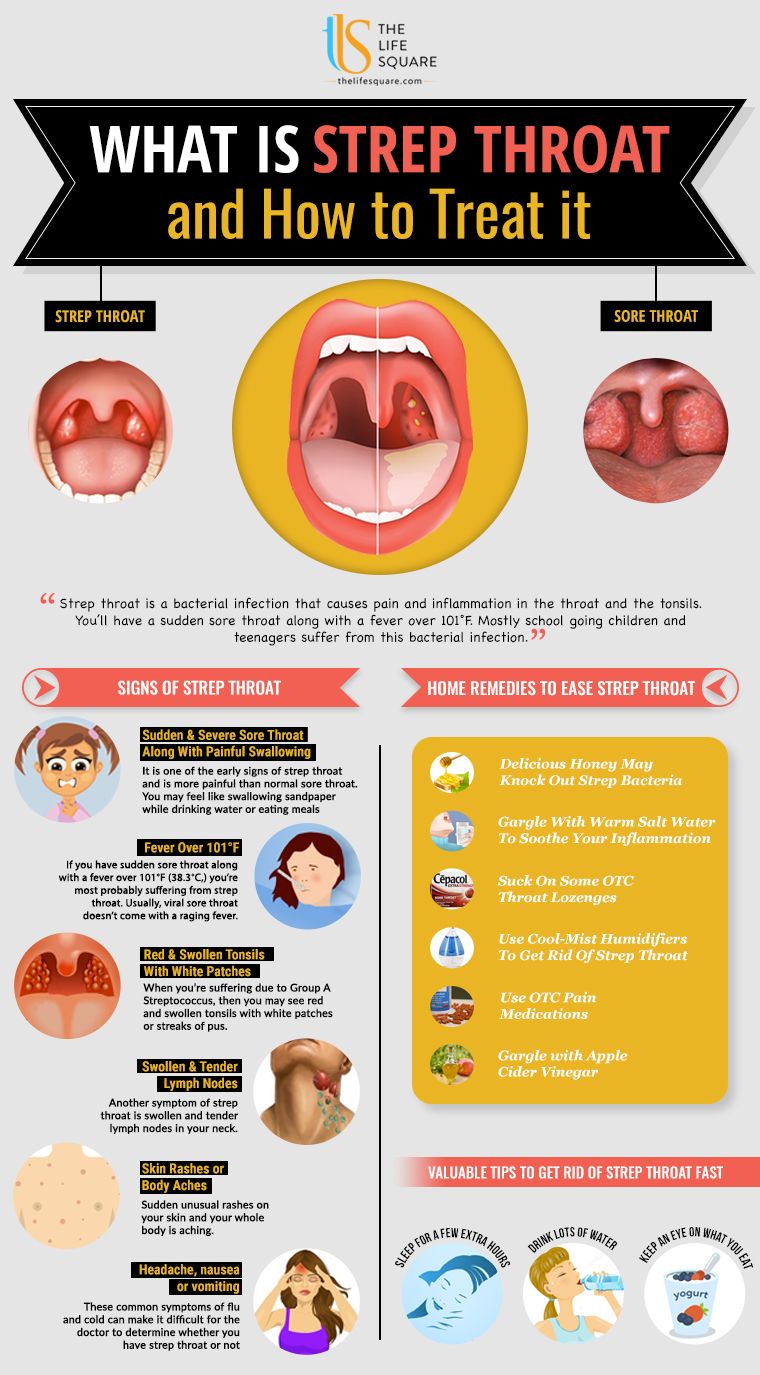 The former include:
The former include:
- Paratonsillitis, abscess of paratonsillar tissue.
- Retropharyngeal abscess in young children.
- Purulent lesions of the ear, paranasal sinuses, lymph nodes, neck, mediastinum, meninges, sepsis.
Diseases that appear after the sore throat and intoxication have long passed are no less dangerous. Due to streptococcus toxins, many organs are affected:
- Heart – myocarditis, endocarditis may develop, due to damage to the valves, acquired heart disease is possible.
- Kidneys – glomeruli are affected, and acute glomerulonephritis develops, which can be suspected by red staining of urine.
- Joints – the synovial membrane suffers, its inflammation and damage begins. The pain in the joints is disturbing, the tissues swell, and over time they can become deformed and serve as a reason for restricting movements.
- Vessels.
Diagnosis of angina in children
To diagnose angina in children, the doctor examines the patient’s throat. At the same time, hyperemia of the palatine tonsils, their arches, uvula and soft palate, swelling of the tissues of the pharynx, purulent overlays are determined. Usually, complaints and characteristic symptoms are enough to make a clinical diagnosis. Laboratory confirmation is the sowing of streptococcus from the material taken from the patient’s throat. For accelerated verification of the pathogen, rapid tests for streptococcus, diphtheria bacillus are carried out.
At the same time, hyperemia of the palatine tonsils, their arches, uvula and soft palate, swelling of the tissues of the pharynx, purulent overlays are determined. Usually, complaints and characteristic symptoms are enough to make a clinical diagnosis. Laboratory confirmation is the sowing of streptococcus from the material taken from the patient’s throat. For accelerated verification of the pathogen, rapid tests for streptococcus, diphtheria bacillus are carried out.
Additional studies help to determine the severity:
- Blood test – there may be leukocytosis, elevated ESR, shift to the left of the leukocyte formula.
- Urinalysis for mild forms without changes.
- ECG of the heart, EchoCG check if there are complaints from the heart.
- Ultrasound of the joints is performed for early detection of rheumatic changes in them.
Differential diagnosis
Angina must be differentiated from other diseases that are accompanied by sore throat:
- In case of ARVI, the whole throat turns red, not only the tonsils, there is a runny nose, cough, sometimes conjunctivitis.
 Influenza is accompanied by severe intoxication and moderate hyperemia, granularity of the posterior pharyngeal wall.
Influenza is accompanied by severe intoxication and moderate hyperemia, granularity of the posterior pharyngeal wall. - Children’s infectious diseases (measles, scarlet fever) are accompanied by a rash, there are epidemiological data on infection of other children.
- Diphtheria is a very dangerous infectious disease in which gray films form on the tonsils, tightly adherent to the tissues. They can spread beyond the tonsils if they are pry, the tissue bleeds. The surrounding mucous membranes are cyanotic, edematous, although intoxication and fever are less pronounced than with angina. The disease is dangerous because laryngeal edema and asphyxia can develop. Treatment is carried out in an infectious diseases hospital, the introduction of serum is required.
- Exacerbations of chronic tonsillitis occur several times a year, usually against the background of SARS, overwork, hypothermia. At the same time, the tonsils are gradually deformed, the arches thicken due to the development of scar tissue.

- Peritonsillar abscess, usually unilateral. The pain and intoxication are very strong, even the mouth cannot be opened wide.
- Inflammation of the palatine tonsils in systemic blood diseases (infectious mononucleosis, leukemia) is diagnosed by changes in blood tests, lymph nodes, liver, spleen are palpated.
- Plaut-Vincent’s necrotic angina is characterized by one-sided location of ulcers and necrosis, they are slightly painful, fusobacteria are found during sowing.
Treating sore throats in children
When treating sore throats in a child, regardless of the severity, antibiotics should be prescribed. Streptococci are sensitive to penicillins, cephalosporins, macrolides. The doctor chooses the dose and drug based on the age of the child, the presence of concomitant diseases. Of the other drugs prescribed:
- Antipyretics.
- Tablets and lozenges for oral dissolution.
- Antiseptic solutions for rinsing and irrigating the throat.

- Antihistamines.
For the treatment of angina in a child of 2-3 years old, medicines are used in a convenient form – in the form of syrups, suppositories, aerosols. The amount of the drug is calculated taking into account body weight. Sometimes the introduction of anticonvulsants is required if muscle twitches and contractions appear against the background of high temperature.
It is advisable to observe bed rest, give a lot to drink, feed light dietary food little and often. The basis of the diet is cereals, vegetable soups, dairy and vegetable dishes, baked fruits, stewed and boiled pureed vegetables.
If the inflammation in the tonsils is fungal, antifungal agents are prescribed. With a viral disease, antiviral drugs are practically not prescribed, symptomatic and pathogenetic treatment is sufficient. With secondary tonsillitis in children, the underlying disease is treated.
Prognosis and prevention
Prognosis with timely visit to the doctor is favorable.

 In this case, the symptoms may be less pronounced than in the acute form of the disease.
In this case, the symptoms may be less pronounced than in the acute form of the disease.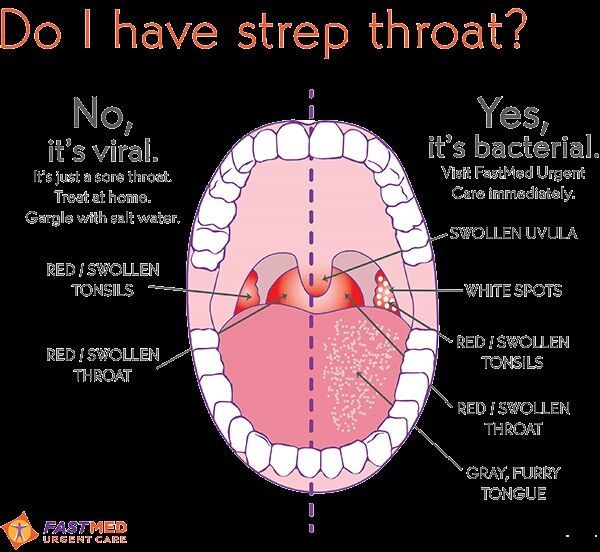

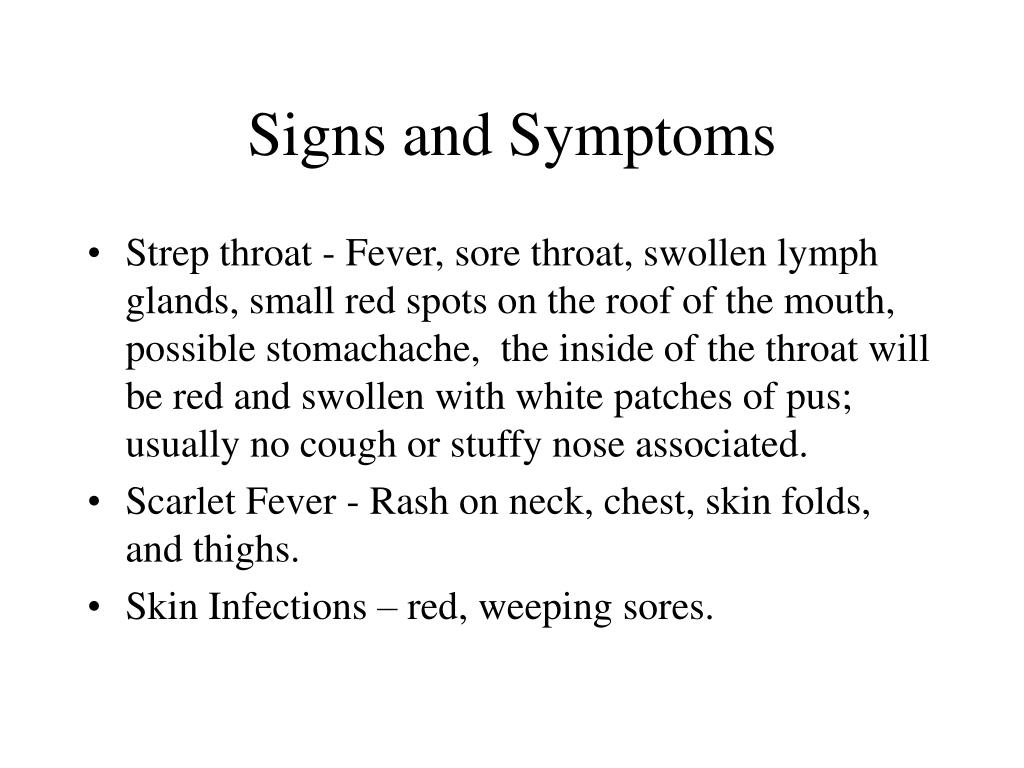
/sore_throat_symptoms-5ae0a8523418c60036278a0f.png) Without tonsils, the child’s immune system is deprived of an important protective link.
Without tonsils, the child’s immune system is deprived of an important protective link. They are more typical for children under 2-3 years old. Features of herpetic infection are rashes in the form of vesicles that are filled with a clear liquid. After their spontaneous opening, superficial sores form on the tonsils.
They are more typical for children under 2-3 years old. Features of herpetic infection are rashes in the form of vesicles that are filled with a clear liquid. After their spontaneous opening, superficial sores form on the tonsils.
 Any angina begins with this form. With a rapidly prescribed treatment, further changes do not increase, edema and hyperemia disappear. Viruses cause only catarrhal inflammation, the appearance of pus indicates the presence of pyogenic flora.
Any angina begins with this form. With a rapidly prescribed treatment, further changes do not increase, edema and hyperemia disappear. Viruses cause only catarrhal inflammation, the appearance of pus indicates the presence of pyogenic flora./strep-throat-symptoms-5ae1f28aeb97de003955dcd2.png) Characterized by high fever, serious condition due to the large amount of toxins.
Characterized by high fever, serious condition due to the large amount of toxins.
 Influenza is accompanied by severe intoxication and moderate hyperemia, granularity of the posterior pharyngeal wall.
Influenza is accompanied by severe intoxication and moderate hyperemia, granularity of the posterior pharyngeal wall.
:max_bytes(150000):strip_icc()/overview-of-strep-throat-1191987_final-21489a625c774930abb4a3c12e13b0a6.png)